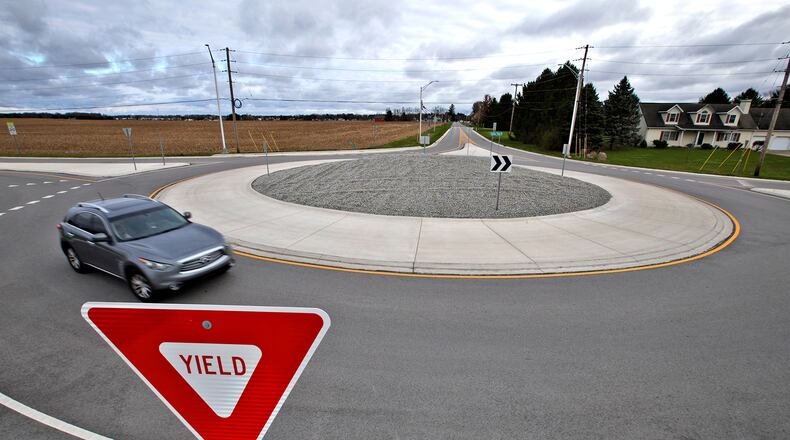The team conducting the study is collecting existing information to analyze intersections, which will be used to create the “Top 50 Intersections” list to consider for improvement. This is intended to be an exhaustive list that will then be studied more extensively to find specific areas for focus, TCC transportation director Louis Agresta said.
“We don’t want to limit ourselves, but I don’t want the public to get the impression that Springfield or Clark County is going to be the roundabout capital of North America,” Agresta said.
Agresta said crashes at traditional intersections are more likely to result in injuries or fatalities than those at roundabouts. Intersection crashes are often at more extreme angles while roundabout crashes are more often sideswipes.
“If we save a couple lives in doing that project, it’s a win, so if we can install them at a few strategic locations to make those intersections safer, I think that’s a win,” Agresta said.
The study will likely go on through the end of the year, Agresta said. There have already been more than 250 responses.
Roundabouts are becoming more popular throughout the U.S. as more communities learn that they are proven safer than other intersections, Agresta said. He emphasized that the study is countywide and does not just include Springfield.
A roundabout near Shawnee schools at Selma and Possum roads has proven effective, Agresta said.
According to the Ohio Department of Transportation (ODOT), roundabouts have eight “potential conflict points” compared to traditional intersections’ 32. The Federal Highway Administration found that roundabouts reduce crashes by 44% and serious injury and deadly crashes by almost 90% at two-way stop intersections.
Roundabouts can also reduce traffic delays and fuel consumption because vehicles do not usually fully stop at the intersection, according to ODOT.
Large vehicles like farm machinery and semis can navigate roundabouts often using truck aprons — areas between the central island and path of travel they can mount but is not used by smaller passenger vehicles, according to ODOT.
Agresta said roundabouts get drivers to slow down, which is particularly beneficial with distracted driving, which is a big issue in Ohio. This prompted a law that allows law enforcement to pull over drivers driving distracted without waiting for them to commit another offense first, and more serious penalties.
Some people may be reluctant to accept this kind of change, but Agresta said he encourages people to learn more about roundabouts because they are proven to be so much safer.
“I would just encourage people to have an open mind and try to learn about them because they really are safer; I know they can be confusing for some but they are safer,” Agresta said.
Some intersection types will not be included in the study. These include those at limited access highway ramps, roadways that carry two or more through lanes in each directions that must be maintained for capacity and divided roadways. The study is only for single-lane roundabouts.
The survey asks respondents to enter their zip code and answer whether or not they support building more roundabouts in the county. If yes, respondents can pinpoint locations for consideration on a map and select their safety concern. All respondents have the option to add additional comments.
The survey can be taken at https://bit.ly/roundaboutstudy.
About the Author
